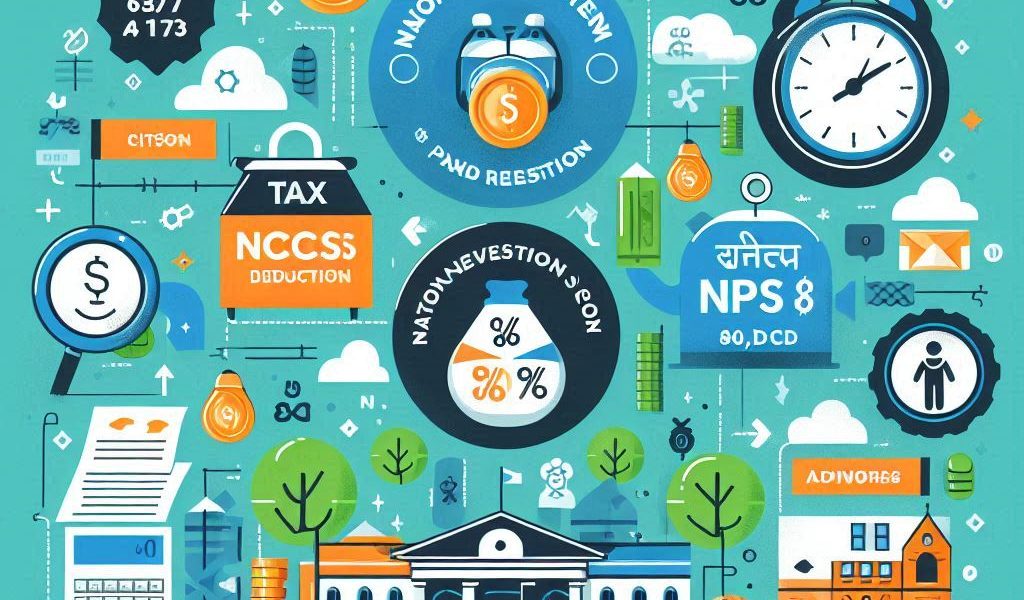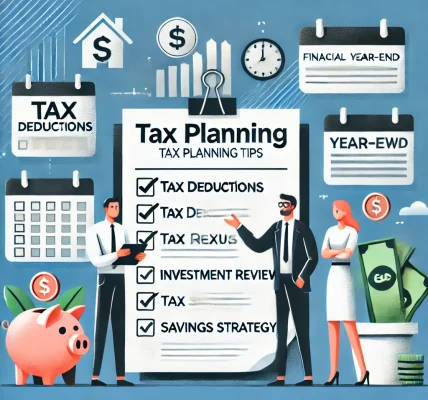Introduction
The National Pension System (NPS) is one of the most effective retirement planning tools in India, offering tax benefits and long-term wealth accumulation. Managed by the Pension Fund Regulatory and Development Authority (PFRDA), NPS is a government-backed voluntary pension scheme that ensures financial security post-retirement.
This guide will explain how to use NPS for tax savings and retirement planning, highlighting key benefits, tax deductions, and strategies for maximizing returns.
1. Understanding the Basics of NPS
What is NPS?
NPS is a defined contribution pension scheme, where individuals contribute regularly towards their retirement corpus. Upon retirement, they can withdraw a portion as a lump sum and invest the rest in an annuity to receive a steady pension.
Who Can Invest in NPS?
- Any Indian citizen (Resident & Non-Resident) aged 18-70 years.
- Employees of private, public, and government sectors.
- Self-employed professionals and business owners.
Types of NPS Accounts
- Tier-I Account:
- Mandatory for all NPS subscribers.
- Offers exclusive tax benefits under Section 80CCD.
- Partial withdrawal allowed under specific conditions.
- Minimum yearly contribution: ₹1,000.
- Tier-II Account:
- Voluntary and acts like a savings account.
- No tax benefits, but offers higher liquidity.
- Can withdraw anytime without restrictions.
- Minimum yearly contribution: No limit.
2. Tax Benefits of NPS Under Various Sections
NPS provides tax benefits under multiple sections of the Income Tax Act, 1961, making it one of the most attractive investment options.
a) Section 80CCD(1) – Employee/Self-Contribution
- Deduction up to 10% of salary (Basic + DA) for salaried individuals.
- Deduction up to 20% of gross income for self-employed individuals.
- Maximum deduction: ₹1.5 lakh (included in Section 80C limit).
b) Section 80CCD(1B) – Additional Deduction
- Additional deduction of ₹50,000 over and above ₹1.5 lakh.
- Available for both salaried and self-employed individuals.
- Total tax-saving potential: ₹2 lakh per year.
c) Section 80CCD(2) – Employer Contribution
- Additional deduction on employer’s contribution to NPS.
- Maximum deduction:
- 10% of salary (Basic + DA) for private employees.
- 14% of salary (Basic + DA) for government employees.
- Not included in ₹1.5 lakh limit under Section 80C.
- Helps salaried employees save more tax.
d) Tax-Free Partial Withdrawal
- Up to 25% of self-contribution can be withdrawn tax-free under special conditions (education, marriage, house purchase, medical emergencies).
- Minimum 3 years of contribution required before withdrawal.
e) Tax-Free Annuity Investment
- At retirement, 40% of the corpus is tax-free.
- Remaining 60% must be used for annuity purchase, ensuring a regular pension.
- Pension received from annuity is taxable as per slab.
3. How to Use NPS for Smart Retirement Planning
Step 1: Choose the Right Investment Strategy
NPS offers two investment options:
- Auto Choice (Lifecycle Fund)
- Allocates funds automatically based on age.
- Higher equity allocation at a younger age.
- Safer investments as retirement nears.
- Active Choice
- Investors can select their asset allocation:
- Equity (E) – Up to 75%
- Corporate Bonds (C) – Up to 100%
- Government Securities (G) – Up to 100%
- Alternative Assets (A) – Up to 5%
- Ideal for investors comfortable with risk management.
- Investors can select their asset allocation:
Step 2: Maximize Contributions for Higher Pension
- Invest a higher amount to build a bigger retirement corpus.
- Utilize both 80CCD(1) and 80CCD(1B) deductions to lower tax burden.
Step 3: Choose the Right Fund Manager
NPS allows switching between 7 fund managers, including:
- SBI Pension Fund
- HDFC Pension Fund
- ICICI Prudential Pension Fund
- LIC Pension Fund
- Kotak Mahindra Pension Fund
- Aditya Birla Sun Life Pension Fund
- UTI Retirement Solutions
Step 4: Use NPS for Retirement Income
- Withdraw 60% tax-free lump sum at age 60.
- Use 40% for annuity purchase to generate lifetime pension.
- Consider joint annuity plans for spouse protection.
4. Common Mistakes to Avoid
❌ Investing in Tier-II Instead of Tier-I – Tier-II does not offer tax benefits.
❌ Not Opting for Employer Contribution (80CCD(2)) – Salaried employees should maximize tax savings with employer contribution.
❌ Ignoring Annuity Planning – Choosing the right annuity option ensures a stable income post-retirement.
❌ Withdrawing Entire Corpus at Once – 60% is tax-free, but withdrawing all funds may lead to unnecessary tax burdens.
❌ Not Reviewing Asset Allocation Regularly – Adjust equity allocation as you near retirement.
Conclusion
NPS is a powerful tool for both tax savings and retirement planning. By strategically investing in NPS and utilizing its tax benefits under Sections 80CCD(1), 80CCD(1B), and 80CCD(2), individuals can reduce their tax liability while building a secure financial future.
Key Takeaways:
✅ Tax benefits up to ₹2 lakh per year. ✅ Employer contribution under 80CCD(2) offers extra savings. ✅ Equity exposure helps in long-term wealth creation. ✅ Tax-free withdrawal of 60% corpus at retirement. ✅ Lifetime pension ensures financial security post-retirement.




